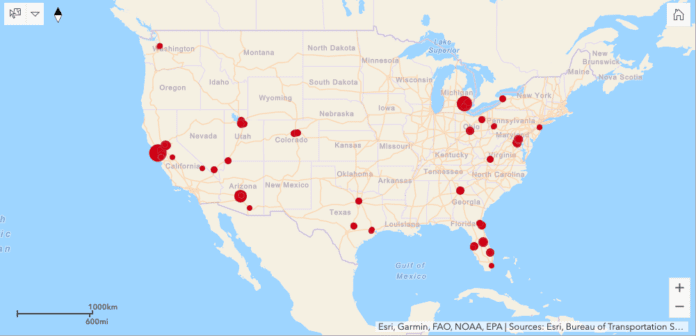The U.S. Department of Transportation has laid out a comprehensive plan for the continued development and integration of autonomous vehicles into the U.S. transportation system — including those which rely on cellular-vehicle-to-everything and other wireless technologies to enable their autonomous operations.
DOT says in the plan that while it “has made significant progress in establishing a regulatory environment supportive of safety and new technologies … there is still much work to be done. We will continue efforts to leverage technology as a tool for the public good, knowing that one day riding in an automated vehicle may be as routine as getting behind the wheel.”
The plan cites use cases for ADS that include low-speed, autonomous delivery vehicles for grocers, restaurants or packages; vehicles that can drive themselves in specific circumstances, such as stop-and-go traffic, but where humans must be prepared to take over; self-driving vehicle fleets with no driving controls that operate within specific geo-fenced areas; automated trucks that operate at highway speeds for long-distance transportation; and low-speed passenger shuttles.
“Development of ADS technology is occurring along multiple paths, and significant uncertainty still exists around what form ADS applications and vehicles will take in the future,” the report states, noting that even with the amount of progress made by industry toward vehicle autonomy, no fully-autonomous vehicles are yet available for sale in the U.S. and “the timing
of wide-scale ADS-equipped vehicle deployment remains uncertain.”
The plan lays out three overarching goals: Promoting collaboration and transparency; modernization of regulatory barriers and assessments of ADS; and preparing the transportation system for the integration of autonomous vehicles through foundational research and demonstrations that are needed as part of the full development autonomous vehicles.
The report also makes the point that while the government expects autonomous vehicles to eventually become common, that it also wants to protect people’s choice of whether to drive or not. The report says that the government “envisions an environment in which AVs operate alongside
conventional, manually driven vehicles and other road users; therefore, the U.S. Government will protect the ability of consumers to make the mobility choices that best suit their needs.”
In related news, the Infrastructure Automotive Technology Laboratory in Georgia celebrated its one-year anniversary and announced the creation of a new partner program for companies which are either directly involved in the lab — such as AT&T, its communications partner — or which develop connected vehicle tech. AT&T and Qualcomm are both charter partner members; Jim Misener, senior director of product management at Qualcomm Technologies called the alliance “a pivotal development in helping put C-V2X on the road.”
iATL has been involved with a number of projects, including the FCC’s C-V2X experimental licensing program in Georgia and Texas.

